Product Excellence
13 Mar 2021Background
Excellence is something which definitely takes a lot of time and effort but it also requires some thought structuring in terms of what things matter towards achieving excellence, why those are important and how to go deeper into those things.
Product & engineering leaders need to drive product excellence and for that there are several things they need to do, following pivots are few of things that can be useful to acheive excellence in a effective way. But depending on the stage of the product and role of the person, different pivots should be given varied importance.

Product Mindset
The product mindset is a very important pivot for achieving product excellence, considering it defines the way a team operates and builds products. Product & engineering leaders definitely need to have a product mindset but should also have a mandate to propagate it within their teams. Few aspects of the product mindset to look are
Product vs Project
Product thinking is very different from project thinking as the focus areas are very different like described below. Product & engineering leaders many times get pushed into project execution due to delivery pressure and it is critical to remain focused on product development by evolving the product using a roadmap towards vision rather than delivering projects.
- Product development is an ongoing exercise driven by feedback loop from users (some will be customers) while project execution is time bound exercise driven by stakeholders
- Product is generally driven by vision and roadmap which are loosely scoped while project is driven by charter and plan which are strictly scoped
- Product focuses more objectives and key results measured through metrics while project focuses more on the delivery (within stipulated time and budget)
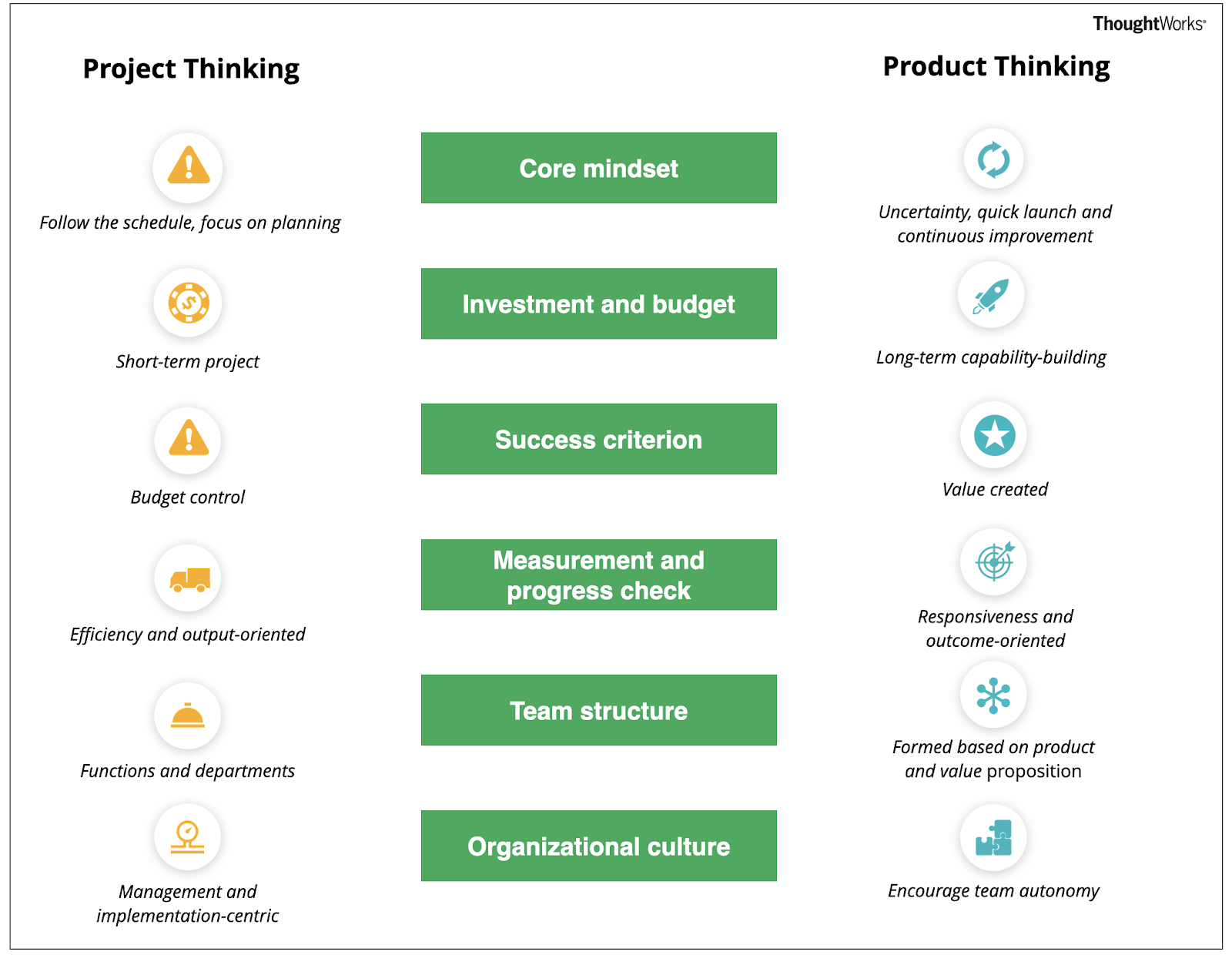
Product vs Solution
Product mindset is very different from solution mindset, solution gives the economy of scope by being closer to solving the specific customer’s problem but product gives economy of scale by solving a common problem faced by many customers.
- Solutions can be built on top of products while products can also be extracted from custom solutions over time.
- Solutions tends to be specific to few customers and is mostly build for enterprise customers where customisation is required and has more value too
- Solution approach is not scalable as it takes time to build custom solution for every customer and that is why it’s important to tilt towards product mindset
Product vs Tech
Product solves a problem or provides experience while technology (in most cases) enables development of many products. Products can utilise existing technologies or build new technologies as needed and generally technologies evolve with products built on them.
- Product mindset means considering technology as a tool to build the product and not the reverse, engineering leaders can give undue emphasis to tech and lose product focus
- Product needs (which are themselves customer driven) should drive the tech choices to avoid being blindsided with biases towards specific technologies
- Product can be built with several alternative technologies and choosing right tech is dependent on the combination of functional & non-functional needs of the product
Productizing Process
Productizing process describes every step in the product’s lifecycle from conceptualisation to planning to development to marketing to sales and back. Understanding the productizing process will help in making right product and tech decisions based on the phase of the product lifecycle and also contributing throughout the process.
- Productizing process includes activities starting from market analysis, product strategy & planning to gtm & sales enablement and this provides a good framework to build product in an iterative way
- Productizing process also enables product team to better adapt to market conditions & feedback which is very important in fast changing world
- Productizing process is useful to ensure that we are thinking about all steps in product lifecycle and not just limited to certain areas

Customer Focus
Customer focus is a very critical pivot for leaders to be successful in achieving product excellence, particularly engineering leaders considering they can lose customer focus due to lack of frequent customer interactions. Following are the aspects which are important for this pivot.
Customer Context
Context in which any customer interactions happens is key throughout the customer lifecycle starting from the product discovery to the successful product adoption or churn. This understanding helps in contextual positioning of products which eases product discovery as well helps in better adoption and engagement.
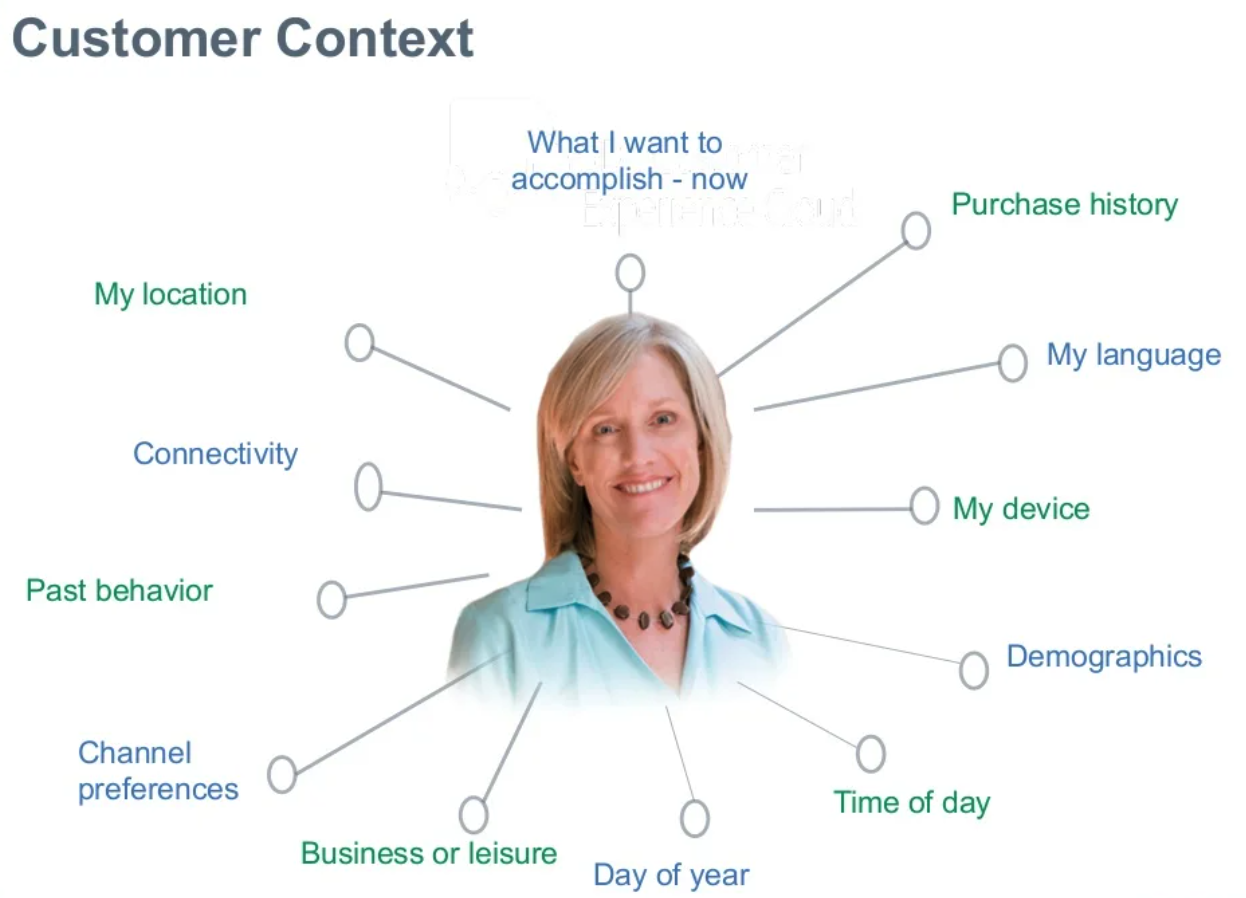
Customer Empathy
Customer empathy maps describe what a customer goes through as he/she is trying to complete a task, in a product or brand agnostic way. In other words, customer empathy maps allow you to take a step back from your product and paint a picture of a typical customer’s experience - their needs, expectations, goal, hurdles and behavior as they do their task.
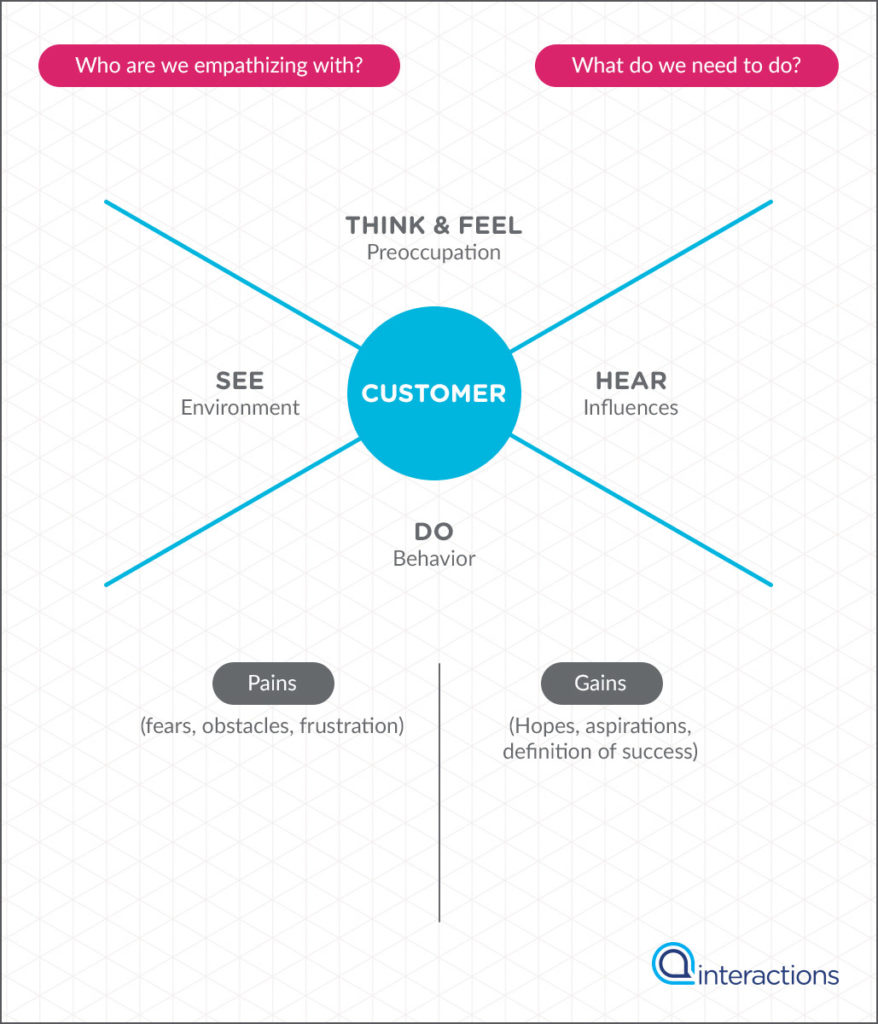
Customer Value
The value customers get from using products or services can be calculated using the customer value proposition canvas which maps customer value creation in the form of gains achieved and pains relieved when getting jobs done.
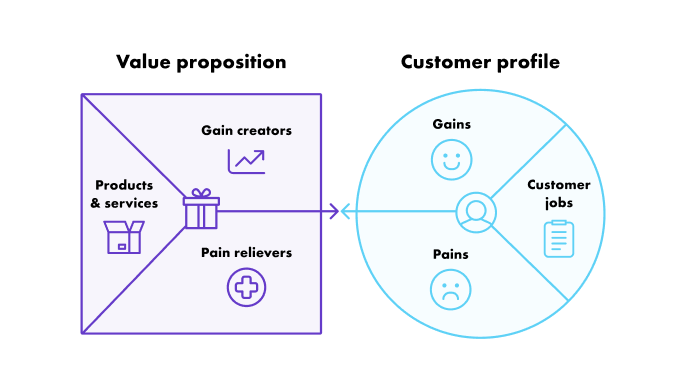
Customer Experience
The customer experience is the perception of the customer formed based on emotion, ease, and effectiveness, when using the product.
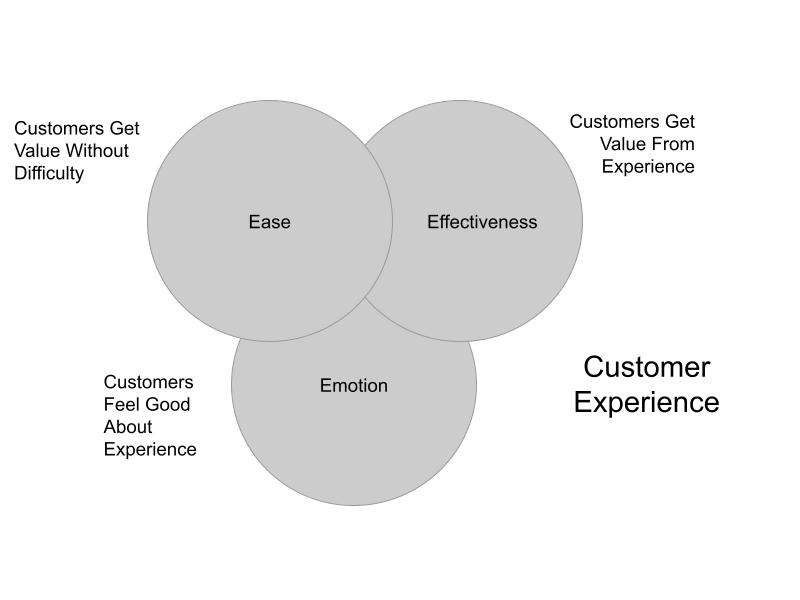
Product Strategy
Product strategy defines what the product aims to achieve and how that supports the organisation, and it also brings product vision & roadmap to life through OKRs and metrics.
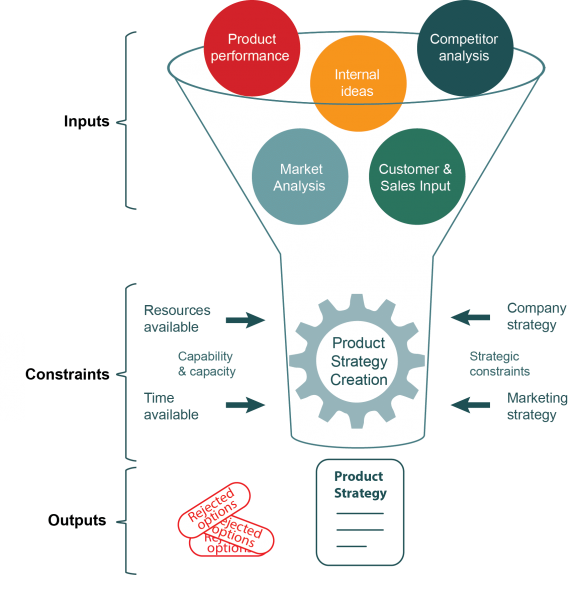
Market & Competition
Market definition and market analysis (trends, sentiments) along with the competitive landscape are the inputs for the product strategy and without understanding these it will be difficult to comprehend the product strategy.
Positioning & Differentiation
Product positioning and differentiation are the starting point of product strategy which will drive the adoption of the product in the market.
Vision & Roadmap
Product vision sets the long term goal while roadmap defines the way towards achieving that goal, both are critical components for successful product development.
OKR & Metrics
Defining OKRs and metrics for the product is very important for the product development and the tracking of the success of outcomes/results.
- Defining annual and quarterly OKRs drives alignment towards objectives while also help in prioritization at both the team (pod, BU) and org level
- Defining metrics for the product enables the definition of key results (in terms of metrics) for the objectives, and this makes the whole product development more data driven
Domain Knowledge
Domain knowledge is an important pivot for driving product excellence from experience, all the four components of domain knowledge together help in building deep as well as wider expertise on system, product & business. Broader functional knowledge across org also helps to identify cross team functional issues.
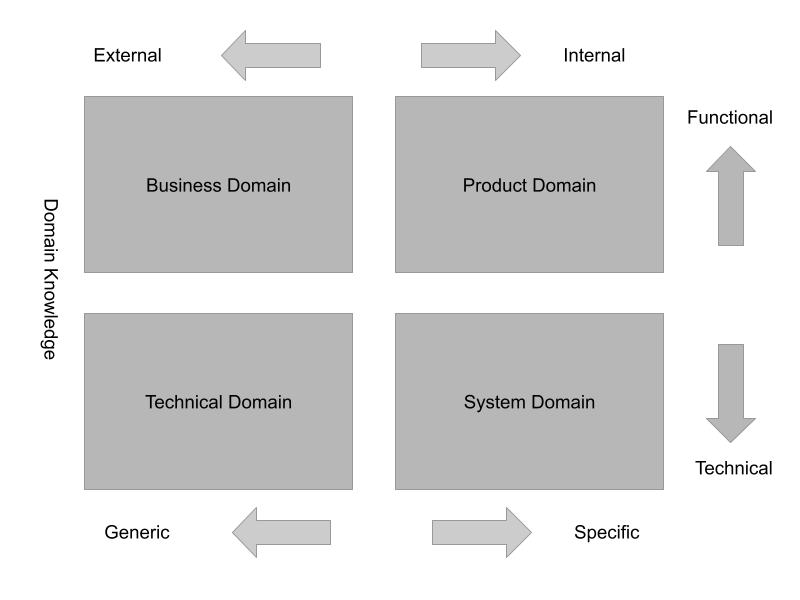
Business Domain
Knowledge, understanding & expertise of different business aspects & relevant metrics
- Learning & understanding of different business domain concepts and business impact of specific functional systems, demonstrating good judgement while making tech trade-offs for complex systems.
- Good understanding of business constructs and metrics around that, have knowledge about how a product fits into the business lifecycle. Knowledge of competitive landscape, industry trends and business/revenue models.
Product Domain
Knowledge, understanding & expertise of different product functionality & relevant metrics
- Good grip on existing & upcoming product functionality & is “go to” person within the team on the domain & related concepts.
- Good understanding of the functional domain (ex: payments, settlement, refund, banking, lending, data platforms) including the product features, metrics and use cases.
System Domain
Knowledge, understanding & expertise of system, can be either breadth or depth focused
- Understand the different terminologies, roles of own and dependent systems as well.
- Expertise on existing systems including design/architecture, the execution & data flows, integration with other systems, various dependencies, trade offs, current gaps & tech debts.
Technical Domain
Knowledge, understanding & expertise of technologies, should be both breadth and depth focused
- Understand why things are done the way they are, different technical terminologies, upcoming technological advancements.
- Mapping product requirements to the right tech stack considering both functional and non functional aspects. (Eg. Tradeoffs in distributed systems such as consistency/availability and at-least once/at most once semantics and how it impacts the system).
- Responsible for all aspects of scale and availability and cognizant of recoverability.
References
- What Is Product Excellence by Google Product Manager
- Leading your organization toward Product Excellence
- Can Building Great Products Help You Build Great Teams?
- Deep user insights: The secret to Product Excellence
- The five levels of Product Excellence maturity
- Product leadership mindset for engineering leaders
- From Products to Experiences
- Value Proposition Design - ppt download
- Shift IT from projects to products: Part 1- What is a product?
- A Product Excellence Framework by Google Product Manager
- The 7 Types of Branding & How To Leverage Them for Growth
- Product Strategy
- Customer Empathy Maps: Customer Experience
- Customer Context: Power Relevant Experiences Create Brand Advocates
- The Power Of Customer Context
- Products Over Projects
- VPs and Directors of Product Management: Finding Excellence
- What is Product Management, really ?
- Adaptive Productizing Process
- Value Proposition Canvas